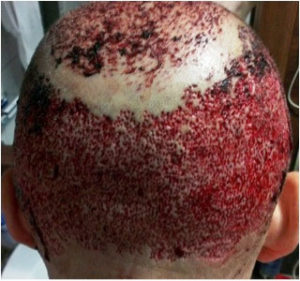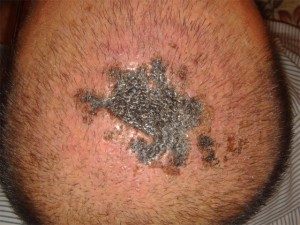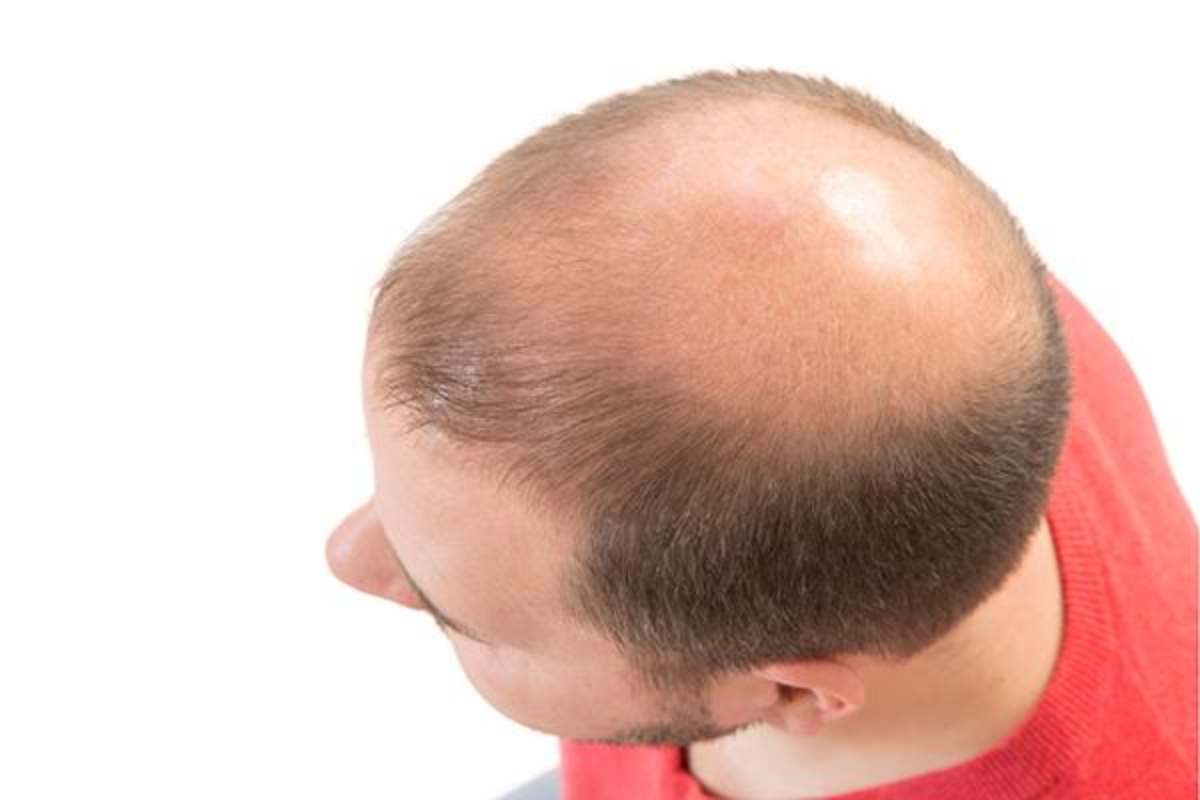First thing’s first: Undergoing a hair transplant surgery is an incredibly safe procedure. Still, every invasive surgery—no matter how minimal—has potential risks. However, by choosing a professional, high quality hair transplant center and educating yourself, rest assured that your procedure will be both safe and successful.
Hair transplant surgeries have surged in popularity worldwide. According to ISHRS, over 635,000 hair transplants were performed in 2016—up more than 60% from just two years before. Unfortunately, with surging popularity also comes a rising number of fraudulent, undertrained wannabes—many of them located abroad—who make a living out of luring in people desperate for an affordable hair loss solution.
Look, we get it. No one wants to go bald and hair transplants are expensive. Who wouldn’t be tempted to fly to an exotic destination (like Turkey) and undergo the same procedure for half the price?
What’s the worst that could happen?
How about wasted money, botched hair transplants, or in the most severe circumstances – death.

In countries without proper regulations, nearly anyone can pretend to be a skilled surgeon despite little actual experience. And don’t let those fancy websites fool you. These days, developing a sophisticated page is easier than ever. With the potential to bring in big bucks, shady “surgeons” (sometimes with no medical training or license) are more than willing to trick people into their low-cost clinic through flashy online advertising.
So, what could happen if you do choose a bargain hair transplant practice? And how can patients ensure they’re trusting the right hair transplant surgeon?
Revision Surgeries
If you choose to travel overseas for a hair transplant surgery, what are the chances that your bottom-of-the-barrel clinic will fly you back to get that bad surgery fixed? Pretty much zero. Even if you have the surgery in the States, expect those low-priced clinics to refuse to redo clearly subpar work, or just ignore your calls entirely.
With a bad hair transplant and no legit surgeon, you’ll end up spending even more for a professional revision procedure to fix the botched job. Before you know it, you’ll be spending thousands to correct that budget procedure.
Outdated Hair Transplant Techniques
Everyone wants a naturally-looking, lush head of hair—not those tacky, pluggy transplants of yesteryear. Thankfully, by choosing a certified, experienced surgeon, no one will know you weren’t blessed with perfect locks from birth. However, by rushing your decision or choosing a low-cost clinic, you risk dooming yourself to a lifetime of clearly transplanted hair.
Highly-trained surgeons are dedicated to continually educating themselves on current, cutting-edge procedures. This means their patients will receive the safest, most realistic hair transplant techniques available. At bargain clinics however, wasting time or money on training usually lands low on the priority list.
Overharvesting or Underharvesting Donor Hair
 Inexperienced surgeons commonly harvest too little or too much donor hair for transplantation. By harvesting too little hair, the scalp won’t receive the necessary coverage to hide bald spots.
Inexperienced surgeons commonly harvest too little or too much donor hair for transplantation. By harvesting too little hair, the scalp won’t receive the necessary coverage to hide bald spots.
Even more distressing is when surgeons take too much hair from the back of the head, where the donor hair is harvested. This creates an unbalanced look where you might finally cover those spots on the top of your head—but now you’re unnaturally balding on the back. Since hair follicles don’t grow back, those transplanted hairs are gone for good.
Bad, Unnatural Hairlines
Just like the rest of the human body, every scalp, head and hairline differs. Experienced hair transplant surgeons are more than just exceptionally trained to create a flawless, natural hairline—they’re also well-practiced artists and hairline designers.
By choosing a poorly-trained surgeon, you’ll risk them not understanding how to create the perfect hairline made for your unique features. This often leads to hairlines appearing abnormal or unnatural for your face shape. Mastering the artistry of hairline design entails more than a weekend seminar and some would argue it can never be taught. It takes years of rigorous training, education and practice along with an innate ability to understand the 3 dimensional shape of the human face and scalp.
Scarring
There are two method for hair transplants, the FUE and the FUT. Though some scarring is always a possibility, with the right surgeon, expect incisions to be strategically placed and essentially invisible—especially once the hair is grown out. If patients put their trust into the wrong hands however, these procedures can easily result in highly visible and unsightly scars.
Infection and Necrosis

From using sterile instruments within a sterile environment to providing antibiotics warding off possible infections, well-trained professionals take every precaution possible to eliminate any chance of infection both during and post-op.
By choosing a budget clinic, patients increase their chances of receiving care in a facility without proper regulation ensuring a clean surgical environment. This increases the chances of infection at the incision site and in extreme cases, necrosis—or when skin or tissue begins to die.
Death
Deaths associated with hair transplant procedures are exceptionally rare, even when performed under questionable circumstances. Still, there have been rare cases where patients passed away soon after going under the knife.
In all reported cases of deaths after a hair transplant, the patient didn’t die due to the transplant itself. Instead, the deaths were likely due to an infection, allergy or an adverse reaction to a medication—all potential risks for any invasive procedure. However, by choosing a reputable clinic, patients ensure that even if an unexpected medical crisis occurs, the surgical team will know exactly which actions to take.
Minimize Your Hair Transplant Risks
Before seriously considering a hair transplant procedure, thoroughly educate yourself on the procedure, the potential clinic and the surgeon’s reputation. Avoid getting pulled in by gorgeous websites alone. Do your due diligence by seeking out references, reviews and the specific certifications of the surgeons.
Also, never be afraid to ask questions. Any hair transplant team worth considering should happily answer any questions or concerns, no matter how big or small. The decision to undergo surgery should never be taken lightly both by the health care team or the patient.
When it comes to any medical procedure, one should never focus on budget over well-being. Like the old saying goes: if it sounds too good to be true, it probably is. Spending more for incredible care not only ensures high-quality results—it could also save your life.
Choose a hair transplant clinic with years of professional, high-quality care and amazing results. Our expert team at Limmer HTC can’t wait to answer every question and ensure you receive the full, lush hair you deserve. Call us today at (210) 496-9992 at or set up an appointment online anytime.







